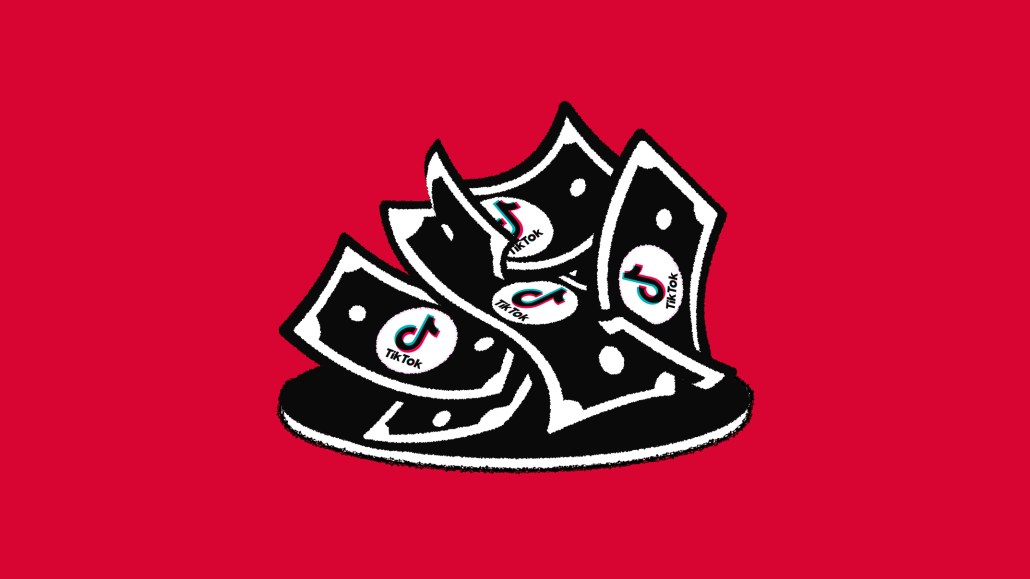As TikTok becomes pay-to-play, marketers remain bullish on organic strategy

As more brands move TikTok into core paid media strategy efforts, the debate of whether the short-form video app is becoming a pay-to-play space is heating up.
With TikTok’s mysterious algorithm, going viral on the app can be easier said than done. Brands like Pepsi have all but abandoned organic posting in favor of paid media strategy. Meanwhile, other branded accounts like Coca-Cola and Frito-Lay lie dormant on the app.
Agencies focused on figuring out how to go viral on the app are opting in favor of paid in hopes of getting a guaranteed spot in front of TikTok’s massive audience of more than 100 million monthly active users. Still, they remain bullish on organic as the platform’s expensive ad tools don’t quite compete with other social media platforms just yet. Instead, many marketers are taking a more hybrid approach, according to agency execs, using both paid and organic to try and go viral, land cool points with Gen Zers on the app, and see a spike in brand awareness and sales.
“Organic [strategy] is super hard,” said Simon Richings, executive creative director at global creative agency AnalogFolk in London. “It’s like watching things go past in a river and saying we’re going to put our little raft out into the world as well and hope.”
Except with TikTok’s flooded feed, organic strategy is less of a river and more of a waterfall, Richings said, meaning it’ll take a hybrid approach to be successful on the app.
Per previous Digiday reporting, TikTok isn’t cheap and a hashtag challenge could cost advertisers up to $150,000 per week. With the costs and ad product tools needing more fine-tuning, backpack brand Brevite isn’t ready to invest major ad dollars in the app just yet. (The brand declined to disclose ad spend on the app.)
According to the brand’s head of marketing, Dylan Kim, it wouldn’t be surprising to see TikTok’s feed go the way of Facebook or Instagram, in which every few posts is a paid ad. In fact, he believes it’s inevitable.
“If any of these platforms have taught us anything, it’s that they start off with great organic reach, great user engagement, they get those numbers up and then the ads set in,” he said. “Just because the paid [strategy] doesn’t work [to go viral] doesn’t mean that the platform is X’d out completely.”
There’s also data privacy threats looming above marketers, meaning organic strategy may become increasingly important for brand awareness, Kim said. “If we see things fall off a cliff and they stay continuing to be falling off a cliff with iOS14 and things like that, it gives us a better reason to be investing in organic TikTok,” he said.
Sticking with organic posts over the last three months, Brevite received over 4.7 million views on 64 videos, averaging 73.4k views per video. Their most popular video has 1.4M views, according to a spokesperson for the brand.
New York-based media agency 360i started dabbling with organic posts on TikTok for Mondelez brands like Oreo, Sour Patch Kids and Chips Ahoy late last year. According to Eden Lipke, associate director of social media at 360i, the agency operates in a two-pronged approach — organic community building and paid efforts.
“We live in the comment section to make sure we’re engaging in the community in real-time,” she said. “There’s always going to be an opportunity to have paid there. It’s sort of like the gasoline that you put on top of the fire.”
TikTok’s algorithm can be enigmatic, built to surface the things that are most interesting all the time, but a paid ad guarantees views. That being said, a mysterious algorithm is within TikTok’s best interest to ensure brands pay, Richings said.
Earlier this month, AnalogFolk rolled out a TikTok campaign for the U.K. chain Costa Coffee, leveraging both paid and organic strategy from the brand’s page with more than 25,000 followers. For the campaign, the agency created 14 different short videos catering to different TikTok communities, giving it a better chance of going viral. And it did. Each of the 14 campaign videos saw no less than a million views each, averaging at about 1.7 million views per video.
AnalogFolk declined to detail ad spend on the campaign but said the ads were posted organically and then boosted by media spend.
“The tricky thing is there isn’t a rule that says oh, ‘Brands just need to do X,’” he said. “You need your secret weapon as a brand.”
Editor’s note: A previous version of this story stated AnalogFolk’s campaign was predominately paid strategy. This story has been updated to reflect a change due to miscommunication with a source.
More in Marketing

Why the New York Times is forging connections with gamers as it diversifies its audience
The New York Times is not becoming a gaming company. But as it continues to diversify its editorial offerings for the digital era, the Times has embraced puzzle gamers as one of its core captive audiences, and it is taking ample advantage of its advantageous positioning in the space in 2024.

Why B2B marketers are advertising more like consumer brands to break through a crowded marketplace
Today’s marketing landscape is more fragmented than ever. Like consumer brands, business brands are looking to stand out in a crowded and competitive marketplace, making marketing tactics like streaming ads, influencers and humorous spots more appealing.

As draft puts WNBA in spotlight, the NBA is speeding up ballplayers’ transition to creators
The NBA’s star athletes are its greatest marketing asset.





